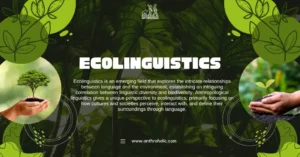AI Answer Evaluation Platform Live Now. Try Free Answer Evaluation Now
Rural Cosmopolitan
In the contemporary discourse surrounding cosmopolitanism, there is an overwhelmingly urban bias. However, cosmopolitanism is not exclusive to urban environments; it extends its vibrant spirit to rural landscapes as well. This framework has given birth to a unique, yet under-researched construct: Rural Cosmopolitanism. It is a term that challenges the popular belief that rural spaces are homogenous, isolated, and culturally inert. It acknowledges the cultural dynamism, diversity, and international influences that exist within rural settings [1].

Theoretical Underpinnings of Rural Cosmopolitanism
Cosmopolitanism: A Brief Overview
Cosmopolitanism, rooted in the Greek words “kosmos” (world) and “polites” (citizen), refers to the idea that all human beings belong to a single community [2]. It celebrates diversity and promotes the idea of an inclusive, global society.
The Rural-Cosmopolitan Intersection
Rural Cosmopolitanism is a convergence of cosmopolitan ideals with the rural social milieu. It identifies rural spaces not as cultural deserts, but as sites of rich, diverse cultural exchanges.
Case Studies: Illustrating Rural Cosmopolitanism
The Glocal Villages of India
In India, rural regions like Punjab and Kerala show high cosmopolitan tendencies, primarily due to a history of international migration and remittances [3]. Despite being based in rural settings, they show a fascinating blend of local and global cultural influences.
Appalachian Communities in the US
In the United States, Appalachian communities showcase rural cosmopolitanism through their multicultural music festivals, diverse gastronomy, and international educational exchanges [4]. These communities have been able to maintain their rural essence while also embracing global influences.
Key Characteristics of Rural Cosmopolitanism
Rural cosmopolitan communities typically exhibit the following features:
- Glocalization: The integration of global and local elements leads to the creation of a unique cultural landscape.
- Transnationalism: These rural communities often have connections with people or places beyond their national borders, leading to cross-cultural influences.
- Diversity and Inclusion: Rural cosmopolitan communities tend to be accepting of diversity and are inclusive in their social fabric.
- Hybrid Identity: Members of these communities often adopt hybrid identities, combining both their local rural and global influences.
| Characteristics | Examples |
|---|---|
| Glocalization | Fusion of local and international cuisines |
| Transnationalism | Connections to international diaspora |
| Diversity & Inclusion | Inclusive festivals celebrating multiculturalism |
| Hybrid Identity | Usage of local language mixed with foreign words |
Embracing Rural Cosmopolitanism in Policy
Rethinking Rural Development
Recognizing Rural Cosmopolitanism’s existence can lead to a paradigm shift in rural development strategies. Instead of viewing rural areas merely as recipients of aid or development, they can be seen as active participants in global cultural exchanges. This acknowledgment can pave the way for policies that nurture this cosmopolitan spirit and leverage it for rural advancement.
Creating Spaces for Cross-Cultural Dialogue
Creating spaces for dialogues and cultural exchanges can strengthen the cosmopolitan fabric of rural communities. Music festivals, literary fests, art workshops, and cultural forums can act as platforms where local and global cultures interact and co-evolve.
| Policy Areas | Examples |
|---|---|
| Rural Development | Develop infrastructure that promotes cultural exchanges (e.g., community centers, libraries, etc.) |
| Cultural Dialogue | Organize cultural festivals, art workshops, literary events |
Implications and Future Directions
Implications
The concept of Rural Cosmopolitanism challenges the urban-centric view of cosmopolitanism and adds a new dimension to how we understand rural societies. It also helps in breaking stereotypes about rural spaces and contributes to a more nuanced understanding of rural life.
Future Directions
More research is needed to explore this concept across different geographies and cultures. Such investigations will help in designing inclusive and culturally sensitive policies for rural development.
Conclusion
Rural Cosmopolitanism acknowledges the cosmopolitan spirit in rural landscapes. It celebrates diversity, inclusion, and the beautiful blend of global and local cultures. The challenge ahead lies in recognizing and nurturing this cosmopolitanism in rural areas, so as to bridge the rural-urban dichotomy and work towards a more inclusive understanding of global citizenship.
References
[1] Ley, D. (2004). Transnational spaces and everyday lives. Transactions of the Institute of British Geographers, 29(2), 151-164. https://www.jstor.org/stable/3804551
[2] Beck, U. (2002). The cosmopolitan society and its enemies. Theory, Culture & Society, 19(1-2), 17-44.
[3] Gurucharan, G. (2012). The transformation of rural Punjab: Migration, remittances and development. Sociological Bulletin, 61(3), 399-421.
[4] Bell, D., & Jayne, M. (2010). The creative countryside: Policy and practice in the UK rural cultural economy. Journal of Rural Studies, 26(3), 209-218.




